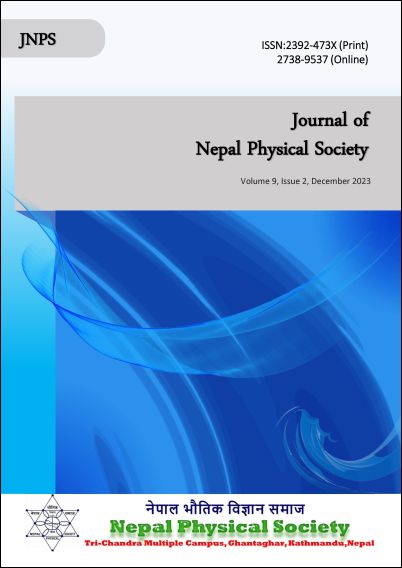Predicting Band Gap of Transition Metal Trihalides using Machine Learning
DOI:
https://doi.org/10.3126/jnphyssoc.v9i2.62287Keywords:
Machine Learning,, Gradient Boosted Regression Tree,, andom Forest Regression, Kernel Ridge Regression, Support Vector Regression.Abstract
Machine Learning (ML) is a tool that finds pattern in data sets for analysis and prediction and is very useful in various sectors such as materials discovery, predicting material properties, medical science, and data science etc. From predicting lattice parameters, stability, band gap, and many other material properties with low cost and good accuracy, ML is becoming popular among material scientists. Recently, a new compound in a two-dimensional (2D) realm (transition metal trihalides) is getting immense interest due to its intriguing properties such as magnetic order in lower dimensions. In this work, we have selected transition metal trihalides to predict band gaps using ML. For the dataset, we have used some compound and elemental properties extracted from the materials project database and periodic table for the features set, and band gaps within the range of 0-3 eV for target variables. We performed the least absolute shrinkage and selection operator (LASSO) for feature selection and selected five features from a set of 24 features. After training and testing our data in four types of ML algorithms (support vector regression (SVR), kernel ridge regression (KRR), gradient boosted regression tree (GBRT), and random forest regression (RFR)), the GBRT model is found to be best with the lowest mean absolute error (MAE) < 0.27 eV and root mean squared error (RMSE) < 0.34 eV.
Downloads
Downloads
Published
How to Cite
Issue
Section
License
All right reserved. No part of this Journal may be reproduced in any form or by any electronic or mechanical means, including information storage and retrieval system, without permission in writing from the publisher, except by a reviewer who may quote brief passage in a review. The views and interpretation in this journal are those of author(s) and they are not attributable to the NPS.




